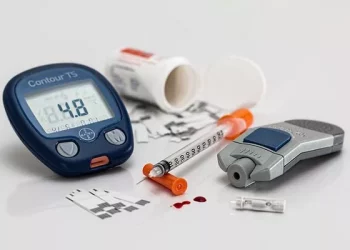A groundbreaking clinical trial has revealed that tirzepatide achieves significantly greater weight loss and waist reduction than semaglutide in adults with obesity but without type 2 diabetes, marking a potential shift in obesity management strategies.
Published in The New England Journal of Medicine, the 72-week phase 3b study, funded by Eli Lilly (tirzepatide’s manufacturer), is the largest direct comparison of these two medications in a non-diabetic population. The findings highlight tirzepatide’s superior efficacy, offering new hope for millions struggling with obesity.
A New Front in Obesity Treatment
With more than 650 million adults worldwide affected by obesity, effective pharmacological options are increasingly crucial. While glucagon-like peptide-1 (GLP-1) receptor agonists like semaglutide have proven successful, tirzepatide introduces a dual mechanism targeting both GLP-1 and glucose-dependent insulinotropic polypeptide (GIP) receptors, potentially enhancing weight loss outcomes.
Despite approval for weight management, comparative data between these drugs in non-diabetic individuals has been limited — until now.
Trial Design and Methods
The open-label, randomized controlled trial enrolled 750 adults with obesity, defined by a body mass index (BMI) of ≥30, or ≥27 with related health complications such as hypertension or cardiovascular disease. Participants received once-weekly injections of either tirzepatide (10 mg or 15 mg) or semaglutide (1.7 mg or 2.4 mg), titrated to the highest tolerated dose.
All participants received standardized counseling on diet and physical activity. The primary endpoint was percentage change in body weight at week 72, while secondary outcomes assessed waist circumference reduction and achievement of key weight loss milestones (10%–30%).
Key Findings: Tirzepatide Leads in Weight Loss
The results were striking. After 72 weeks:
Tirzepatide reduced body weight by an average of 20.2%, compared to 13.7% with semaglutide, translating to approximately 22.8 kg versus 15 kg lost, respectively.
A larger proportion of tirzepatide users achieved major weight loss thresholds:
10% loss: 81.6% (tirzepatide) vs. 60.5% (semaglutide)
20% loss: 48.4% vs. 27.3%
30% loss: 19.7% vs. 6.9%
Waist circumference reductions were also greater with tirzepatide: 18.4 cm versus 13.0 cm with semaglutide.
These results were consistent across demographic groups, with women experiencing approximately 6% more weight loss than men in both treatment arms.
Health Benefits Scale with Weight Loss
Beyond weight reduction, improvements in cardiometabolic risk factors — including blood pressure, fasting glucose, and lipid profiles — were observed in both groups. The magnitude of these benefits correlated strongly with the extent of weight loss achieved.
Safety and Tolerability
Both medications demonstrated safety profiles aligned with previous data. Gastrointestinal side effects, such as nausea and diarrhea, were the most frequently reported adverse events, particularly during dose escalation. However, semaglutide had a higher discontinuation rate due to these issues (5.6%) compared to tirzepatide (2.7%).
Injection-site reactions were more common with tirzepatide (8.6%) but were generally mild and did not result in treatment discontinuation. Serious adverse events were rare and comparable between groups (around 4%). One confirmed case of pancreatitis occurred in the semaglutide group.
Implications for Clinical Practice
The trial’s diverse cohort — including 19% Black and 26% Hispanic or Latino participants — enhances the generalizability of these findings. Despite its open-label design, which could introduce bias, the results are in line with prior blinded studies, underscoring tirzepatide’s robust efficacy.
As obesity rates continue to climb, these findings may influence future clinical guidelines and support more personalized, patient-centered obesity treatment strategies. Tirzepatide’s superior weight loss effects, coupled with its manageable safety profile, position it as a leading option for individuals seeking significant and sustained weight reduction.
Conclusion
In adults with obesity but without type 2 diabetes, tirzepatide decisively outperformed semaglutide in promoting weight loss and improving metabolic health over 72 weeks. These results solidify tirzepatide’s role as a powerful therapeutic tool in obesity management, potentially redefining treatment approaches for a condition of growing global concern.
Related topics:
Tips to Lower Diabetes Risk with a Family History
Targeting Insulin Resistance in Youth: A Path to Prevent Type 2 Diabetes



























